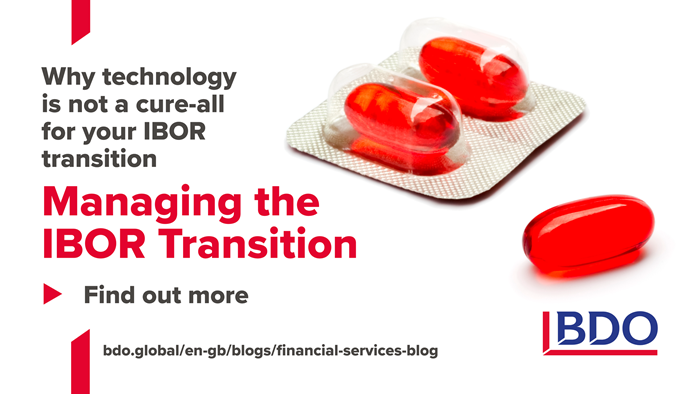Three technologies for managing the next steps in your IBOR transition

I have seen quite a few firms advertising their support for companies during the IBOR transition using buzzwords like artificial intelligence and machine learning. They seem to say that these technologies can ease the pain and suffering of companies that need to change to a different benchmark rate after the phaseout of the IBOR, the Interbank Lending rate.
I agree that these are important technologies that can be extremely useful during an IBOR transition, but sometimes I get the impression that they are seen as cure-alls. In my opinion, it’s equally important to have a tailored approach for a smooth transition that combines the right processes and systems with the right technology. And this depends on each organisation’s individual situation.
Let’s have a look at some of these technologies and how they can best be implemented from an organisational point of view. These technologies cover three phases of a typical transition project: data collection, data analysis and contract re-negotiation. The technologies that can be used in these phases are: contract-recognition technologies (e.g. optical character recognition (OCR)), artificial intelligence (AI), and robotic process automation (RPA).
The first two are important in the initial phase of determining your company’s exposure to rates that will be phased out, while the third technology, RPA, will help when it comes time to take action.
Contract-recognition technologies
Contract recognition technologies, based on OCR, can be used to digitise contracts and lay the groundwork for them to be analysed. Most companies have a wide variety of types of contracts in their organisation. Not only are the terms very different, but some are paper, and some are electronic. And they are often stored in different systems in different locations, perhaps even in different countries. Of course, they will be in different languages, too. Making matters even more complex, some companies’ archived materials do not reflect their current operations. Their data may be out of date as well, complicating efforts to assess exposure.
Getting all contracts in digital format and reconciling databases is an important step for efficient analysis of a company’s exposure. But this task can be overwhelming. It is my experience that most of the time, companies don’t have records as well-structured as they think.
That means that the transition away from IBOR can actually be a chance for companies to create momentum in their digital transformation. This can lead the way to developing new products and value chains.
To manage the IBOR transition, and to generate what I would call a “positive externality” from the process, you will need a tailored approach.
Artificial Intelligence
AI is being adopted rapidly as the amount of data to be analysed continues to grow exponentially and budgets for computing power rise. Algorithms can be trained to do almost any task if the proper data environment and modelling practices are in place. For instance, when combined with the right processes and systems, AI can extract contract terms and support in valuation and risk-management exercises.
Its main use will be in the analytical part of the transition process. New reference rates mean changes to valuation practices at their very foundation, particularly when looking to replicate the current position in new and still illiquid markets.
It is still early to have a really clear picture about forward-looking interest rate term structures. This can mean model risk. To avoid that risk, AI can be applied with model specifications. Of course, sample size and data quality are crucial for reliable results.
RPA (Robotic Process Automation)
Now for the third technology. All companies will have to inform their clients that their base rates are changing. This is a chance to engage clients in discussions and deepen or expand the relationship. I expect larger organisations to develop machine-constructed texts for mass emailing, and some will surely set up automated chat bots that are tasked with answering frequently asked questions and initiating re-negotiations.
In my view, RPA may be a critical technology for those companies that have to renegotiate massive numbers of contracts. Chat-bots will be put in place to initiate contact with clients, then they will answer the client’s questions, drawing on contract data.
However, RPA has limitations and cannot be used to re-negotiate all contracts that are normally present in mid-size to large companies.
Another thing to keep in mind is that humans will need to be heavily involved in the end phase no matter what, since authorities like the working group at the European Central Bank, are pushing cash settlements as the most efficient way to settle differences in contracts. It will take humans to negotiate an agreement between both parties.
Pulling it all together with a dashboard
Managing the transition from IBOR is a challenge faced by many organisations, and it is important to keep an overview of all steps in the process. Some companies will choose to monitor their progress using process mining and financial analytics, with the end results shown on dashboards. They may set up alerts that are triggered when certain risk thresholds are reached or the process is bogging down.
These are all options that companies have, but the trick is finding the right mix of technologies and the right processes to go along with the technologies.
Then of course, it’s time to look for replacement rates and, potentially, buy financial instruments that will minimise your company’s risk when trying to replicate your current position.
But that is a discussion for later.